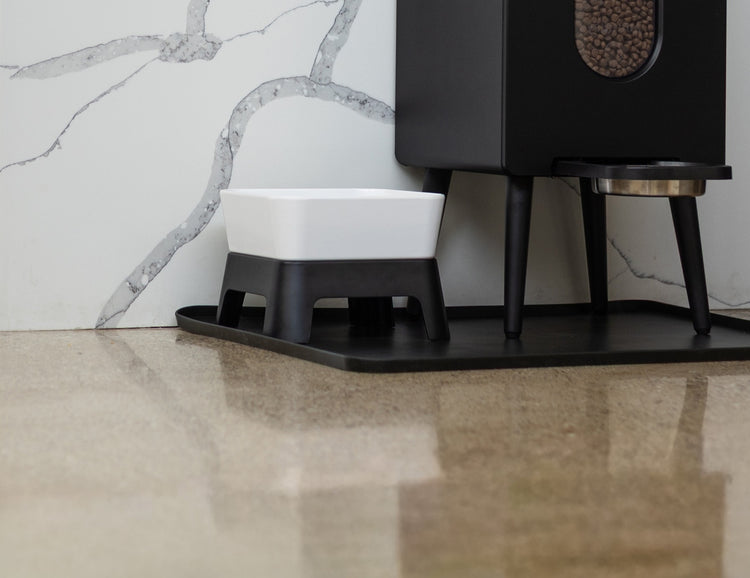How to Help Your Dog Lose Weight: Home Remedies and Practical Tips
- Houndsy
Table of Contents
- Introduction
- Understanding Canine Obesity
- Practical Steps to Help Your Dog Lose Weight
- Maintaining a Healthy Weight
- Conclusion
- FAQ
Introduction
Did you know that approximately 56% of dogs in the United States are classified as overweight or obese? This staggering statistic highlights a pressing issue that affects the health and well-being of our beloved pets. As dog owners, we all want our furry friends to live long, happy lives, free from the complications that come with excess weight. The good news is that helping your dog lose weight can be achieved through simple home remedies and lifestyle adjustments.
In this blog post, we will explore effective strategies and home remedies to help your dog shed those extra pounds. We aim to provide a comprehensive guide that covers everything from dietary changes to exercise routines, ensuring that you have the tools necessary to support your dog's weight loss journey. By the end of this article, you will have a thorough understanding of how to help your dog lose weight through practical, actionable steps.
We will delve into the importance of consulting with your veterinarian, understanding portion control, the benefits of a balanced diet, and incorporating exercise into your dog’s daily routine. We will also reflect on our own experiences and how we can make feeding time a more enjoyable and stress-free experience for both us and our dogs. Let's embark on this journey to better health for our canine companions together!
Understanding Canine Obesity
The Impact of Obesity on Dog Health
Obesity in dogs is more than just a cosmetic concern; it can lead to serious health issues such as diabetes, joint problems, heart disease, and even a reduced lifespan. Just like in humans, excess weight puts additional strain on a dog's body, making everyday activities more challenging. It's crucial to recognize the signs of obesity in dogs, which may include:
- Difficulty in walking or exercising
- Excessive panting
- Reduced energy levels
- An inability to groom themselves properly
By understanding the risks associated with obesity, we can take proactive steps to ensure our dogs maintain a healthy weight.
Consulting Your Veterinarian
Before embarking on any weight loss program for your dog, it's vital to consult with your veterinarian. They can assess your dog's health, rule out underlying medical conditions, and help determine a safe target weight. Your vet will also provide guidance on appropriate dietary changes and exercise routines tailored to your dog’s unique needs.
Practical Steps to Help Your Dog Lose Weight
Portion Control: No More Guesswork!
One of the simplest yet most effective ways to help your dog lose weight is through portion control. Many pet owners tend to eyeball their dog's food portions, which can lead to overfeeding. Instead, we recommend the following steps:
- Use a Measuring Cup: Invest in a measuring cup to ensure you are feeding your dog the correct amount of food. This simple tool can help prevent unintentional overfeeding.
- Follow Feeding Guidelines: Refer to the feeding guidelines provided on your dog food packaging or as recommended by your veterinarian. These guidelines are usually based on your dog’s weight, age, and activity level.
- Scheduled Feeding Times: Establish a routine by feeding your dog at the same times each day. This not only helps regulate their metabolism but also creates a sense of anticipation and structure.
Nutritional Analysis: Choosing the Right Diet
When it comes to helping your dog lose weight, diet plays a critical role. Here are some essential factors to consider while selecting the right food:
- High-Quality Ingredients: Look for dog foods with whole, natural ingredients. Avoid fillers and artificial additives, which can contribute to weight gain without providing essential nutrients.
- Low-Fat and High-Protein Options: Many brands offer specialized weight control or low-fat dog foods that still deliver the necessary nutrients. A diet high in protein can help maintain lean muscle mass while promoting fat loss.
- Consult Your Vet: Work with your veterinarian to determine the best dietary plan for your dog. They can recommend specific brands or types of food that will support your dog's weight loss.
Healthy Treat Alternatives
Treats can quickly add up in calories, leading to unintended weight gain. To help your dog lose weight, consider the following tips:
- Limit Treats: Treats should not make up more than 10% of your dog's daily caloric intake. Be mindful of how many treats you give and opt for healthier options.
- Healthy Alternatives: Instead of traditional dog treats, consider offering your dog fresh fruits and vegetables such as apple slices, carrots, or green beans. These low-calorie snacks can satisfy their cravings without adding unnecessary weight.
Incorporating Regular Exercise
Exercise is a crucial aspect of any weight loss plan. Dogs need regular physical activity to maintain a healthy weight and improve their overall well-being. Here’s how to incorporate more exercise into your dog’s routine:
- Daily Walks: Aim for at least 30 minutes of brisk walking each day. Walking is a low-impact exercise that can be easily adjusted to your dog's fitness level.
- Playtime: Engage your dog in fun activities that promote movement, such as fetch, tug-of-war, or agility training. These games can be an enjoyable way to bond while keeping your dog active.
- Increase Activity Gradually: If your dog is not used to regular exercise, start slowly and gradually increase the duration and intensity of their activities. This will help build their stamina without overwhelming them.
Tracking Progress
Monitoring your dog’s weight loss progress is essential to ensure you're on the right path. We can do this by:
- Regular Weigh-Ins: Weigh your dog weekly or bi-weekly to track their progress. Use the same scale and conditions each time for consistency. If you notice a plateau or slow progress, consult your veterinarian for adjustments.
- Food and Activity Logs: Keep a journal of your dog’s food intake and exercise routines. This can help identify patterns and areas for improvement.
Involving the Whole Family
Weight loss is a team effort! Involving the entire family in your dog's weight loss journey can create a supportive environment. Here’s how to get everyone on board:
- Set Shared Goals: Discuss your dog’s weight loss plan with family members and set collective goals. This helps everyone understand their role in the process.
- Monitor Treat Giving: Designate one person to manage treat distribution to avoid overindulgence from other family members.
- Make Exercise a Family Activity: Plan family walks or play sessions with your dog, turning exercise into a fun bonding experience.
Maintaining a Healthy Weight
Once your dog reaches their target weight, it’s essential to maintain that healthy state. This can be achieved through:
- Adapting Their Diet: Transition your dog to a maintenance diet as recommended by your veterinarian. This will help keep their weight stable without causing additional weight gain.
- Continued Exercise: Keep up with regular exercise to prevent weight regain. Ideally, we should aim for 30 minutes to two hours of activity each day.
- Regular Vet Check-Ups: Schedule regular check-ups with your veterinarian to monitor your dog’s health and weight. They can provide ongoing support and make necessary adjustments to your dog’s care plan.
Conclusion
Helping your dog lose weight is a journey that requires commitment, patience, and love. By focusing on portion control, nutritional analysis, healthy treat alternatives, regular exercise, and tracking progress, we can create a supportive environment for our dogs to thrive. Let's remember that our efforts not only contribute to our dog's physical well-being but also enhance their quality of life.
As we embark on this journey together, let’s keep our furry friends’ happiness and health at the forefront. If you're looking for a way to make feeding time more convenient and enjoyable, we encourage you to explore the Houndsy Kibble Dispenser. With its innovative design, it ensures perfect portions every time, making it easier to stick to your dog's weight loss goals. Order Now.
FAQ
What are some signs that my dog is overweight?
Common signs of an overweight dog include difficulty in walking, excessive panting, reduced energy, and an inability to groom themselves properly.
How can I determine the right portion size for my dog?
Consult your veterinarian for recommendations based on your dog's weight, age, and activity level. Using a measuring cup can help ensure accurate portions.
Can I still give my dog treats while they are losing weight?
Yes, but limit treats to no more than 10% of their daily caloric intake. Opt for healthy alternatives like fresh fruits and vegetables.
How much exercise does my dog need each day?
Aim for at least 30 minutes of brisk walking daily, along with playtime and other activities to keep your dog active.
What should I do if my dog isn't losing weight?
If your dog isn't losing weight despite following a plan, consult your veterinarian to rule out any underlying health issues and adjust their diet or exercise routine as needed.













